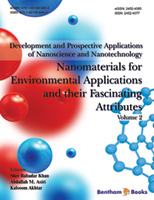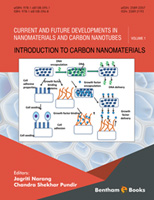Foreword
Nanotechnology is becoming increasingly important in biomedical research and clinical medicine. Similar to other fields, nanotechnology is believed to have a great future in broad aspects of medicine. For example, nanoparticles can potentially improve drug delivery into targeted cells or specific sites within tissue, overcome drug insolubility, enhance drug penetration across barriers and prolong drug bioavailability or achieve sustained drug release. Nanoparticle-mediated drug delivery is being widely studied, as nanoparticles can encapsulate drugs in broad categories including small molecule compounds, peptides, antibodies, siRNA and DNA. Furthermore, most nanoparticles have excellent storage capacity and can be produced with biocompatible and biodegradable materials. Due to their small size, nanoparticles can carry drugs into cells to reach disease sites, which increases local drug concentrations and reduces systemic toxicities. Nanoparticles are also used to achieve sustained drug release after a single injection and thus reduce the injection frequency. This application is especially attractive for drug delivery to sites which drugs cannot reach in an efficient manner. In addition, the engineering of specialized nanoparticles offers a tremendous promise for improving medical imaging and diagnosis techniques.
Nanotechnology in medicine is a fast growing field with numerous publications each year. The purpose of this eBook is to introduce the rationale for the use of nanotechnology in medicine and summarize recent advances in some specific applications of nanotechnology in medicine. This eBook also provides a perspective on the future development and potential use of nanotechnology in medicine and discusses the current limitations and hurdles in the medical application of nanotechnology. This eBook will be of interest to readers in broad fields, including scientists in drug research and development, biomedical technologists, researchers in nanotechnology, medical doctors with interests in improved drug delivery and diagnosis, as well as students in nanotechnology and drug delivery fields.
The editor of the eBook, Dr. Mark Slevin, is a well established scientist with extensive knowledge in the medical application of nanotechnology. Dr. Slevin has been doing research in nanotechnology for many years, and has published multiple peer-review journal articles, invited reviews and eBook chapters. He is currently serving as Editor-in-Chief for the Journal of Vascular Cell, and Editor of Brain Pathology, Frontiers in Biosciences, Neural Regeneration Research, the Open Circulation and Microvascular Journal, World Journal of Cardiology. Each chapter of the eBook contains an in-depth review of a growing field of medical nanotechnology and has been written by leading experts. This eBook is an excellent resource for anyone interested in the current status and future potential of the utilization of nanotechnology in medicine.
Jian-Xing Ma
Department of Medicine Endocrinology
University of Oklahoma Health Sciences Center (OUHSC)
Oklahoma City, OK 73104
United States





